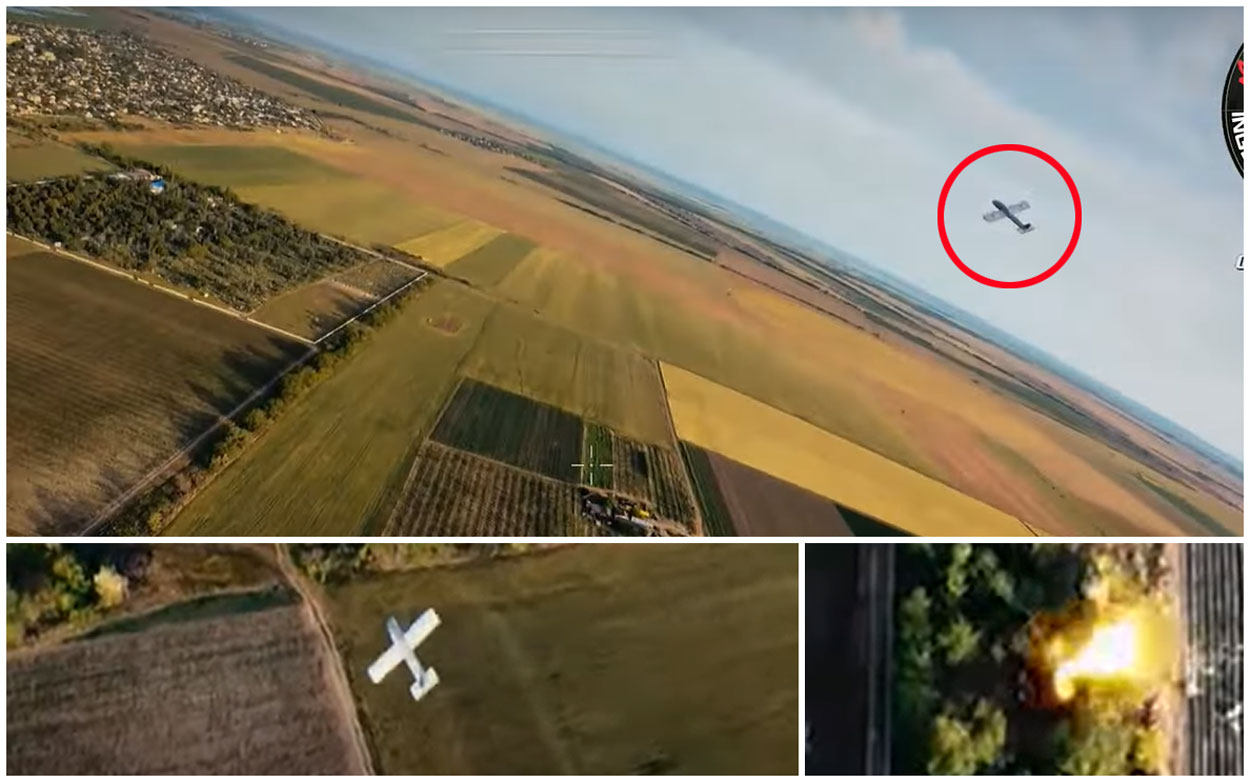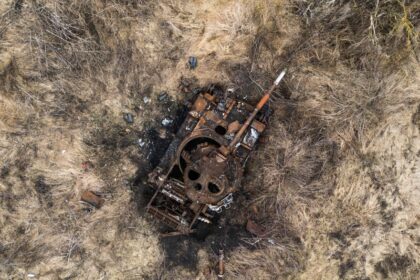**Ukraine’s Electronic Warfare Drives a Wedge in Russia’s Drone Army**
The ongoing conflict between Ukraine and Russia has seen the rise of drone warfare on both sides. A recent video shared by Militarnyi shows a Ukrainian FPV (First-Person View) drone using electronic warfare capabilities to take down a Russian Molniya-2 kamikaze drone.
This innovative use of technology is crucial in the ongoing drone arms race, where cheap mass-produced drones are being used as weapons on the battlefield. The Molniya-2 drone is a prime example of this trend, with its low-cost design and adaptability making it a valuable asset for Russian forces.
**Jamming the Enemy’s Signals**
The video shows the Ukrainian interceptor approaching the Russian drone, which then loses control and crashes. Militarnyi reports that this was likely due to an onboard electronic warfare (EW) system used by the Ukrainian drone. This system jammed the Molniya-2’s control signals, forcing it to crash without firing a single shot.
This is not the first known incident of a Ukrainian drone using EW methods to down a Russian UAV. Similar interceptions were previously noted starting in mid-March, with a growing frequency through April and May.
**Exploiting Weaknesses**
One likely vulnerability in the Molniya-2 drones is their use of ERLS control systems with active telemetry. This allows Ukrainian forces to detect the UAV’s control frequencies and exploit them using targeted jamming in narrow frequency bands. This method does not require high-power systems and can be deployed directly from the intercepting drone.
**Mass-Produced Drones**
The Molniya-2 is a fixed-wing kamikaze drone developed as a low-cost, mass-produced weapon. Its construction involves foam, plastic, aluminum tubing, and wooden components. Electronics and engines are mostly standardized with FPV drones.
This design makes it an ideal candidate for Ukraine’s EW countermeasures, which can be deployed against cheap Russian drones like the Molniya-2.
**Battlefield Adaptability**
The Molniya-2 can fly up to 60 kilometers and reach speeds of 120 km/h. Its payload varies depending on the launch method, but it can carry explosive charges or a TM-62 mine weighing up to 10 kilograms.
Militarnyi had earlier reported that Russian forces began adapting Molniya drones to serve as carriers for FPV drones. This has made them even more versatile and difficult to counter.
**Commentary**
The use of EW capabilities by Ukrainian forces against Russian drones is a significant development in the ongoing conflict. It showcases Ukraine’s ability to innovate and adapt its technology to counter the enemy’s advantages.
This could potentially shift the balance of power on the battlefield, making it harder for Russia to rely on cheap mass-produced drones as a means of projecting force.
**What’s Next?**
As drone warfare continues to evolve, we can expect to see more advanced technologies being developed and deployed by both sides. Ukraine’s use of EW capabilities against Russian drones is just one example of this trend.
The future of warfare will likely be shaped by the rapid advancements in electronic warfare technology, as well as the adaptability and innovation shown by military forces on both sides.
Read More @ euromaidanpress.com












